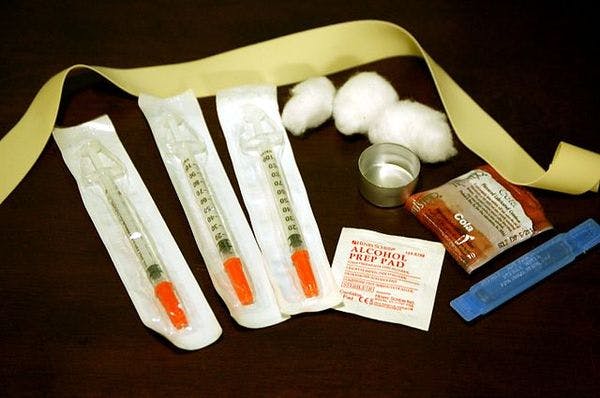Wikimedia Commons - Todd Huffman - CC BY
EE.UU.: El reto de tratar dos epidemias a la vez
El aislamiento, restricciones para acceso a tratamiento, un panorama de deterioro económico y la escasez de vivienda ponen en peligro la respuesta para la reducción de daños. Más información, en inglés, está disponible abajo.
In mid-March, as the Covid-19 pandemic was accelerating, Shantae Owens found a man unconscious in a public bathroom in Tompkins Square Park, in New York’s East Village. Owens wasn’t surprised at his discovery. He was on street outreach distributing naloxone, which helps reverse opioid overdoses, as well as syringes, condoms, and other health supplies. He administered naloxone and called 911. The ambulance took longer to arrive than usual.
Owens is an outreach worker with the Lower East Side Harm Reduction Center, which has temporarily stopped doing outreach due to Covid-19-related safety concerns. But he still covers the parks, public restrooms, and drug houses of the South Bronx, Washington Heights, and Lower Manhattan as a volunteer with VOCAL-NY, a grassroots organization that grew out of the AIDS epidemic and is staying open during the lockdown. Many harm reduction programs are still running as essential services, though others, such as those that operate out of county health departments, like Michigan’s, are now largely closed because of Covid-19. Owens is concerned about what the lockdown will mean for drug users—in particular, for people who use opioids and are at high risk of fatal overdose. “We fear that overdose is going to rise,” Owens told me, “because there’s not enough services. We’ve already lost so many people to the overdose crisis.”
Around the country, organizations that work to reduce drug-related harms such as overdose, HIV, and hepatitis C are now facing yet another devastating virus. And for active drug users, people in drug treatment, and people without stable housing, business closures and physical distancing mandates are causing a cascade of economic and practical difficulties that compound health dangers. “I worry for my community,” said Kelly Culbert, who works at NYHRE, an East Harlem harm reduction center that has closed temporarily. “They’re scared. They have very little access to equipment [for safer drug use]. And everything has become more problematic—from the ways people were making their money to locating a dealer and that person having an adequate supply. It’s all become riskier, less available.”
